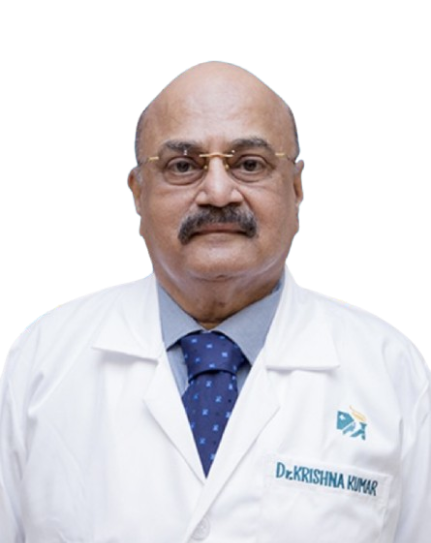Canalith Procedure: Fix BPPV Dizziness
Dr. Rachana Gaddipati

Treatment Duration
5 Minutes
------ To ------15 Minutes
Treatment Cost
₹ 50,000
------ To ------₹ 1,00,000

Table of Contents
- What is Canalith Repositioning Procedure (CRP)?
- What are the Benefits of Canalith Repositioning Procedure (CRP)?
- Who Needs Canalith Repositioning Procedure (CRP)?
- What May Happen if Canalith Repositioning Procedure (CRP) is Delayed?
- How is Canalith Repositioning Procedure (CRP) Performed?
- What to Expect Before Canalith Repositioning Procedure (CRP)?
- What to Expect On the Day of Canalith Repositioning Procedure (CRP)?
- What is Recovery and Post Op Care After Canalith Repositioning Procedure (CRP)?
- What are the Possible Complications After Canalith Repositioning Procedure (CRP)?
You can check Canalith Procedure: Fix BPPV Dizziness Cost here.
What is Canalith Repositioning Procedure (CRP)?
Canalith Repositioning Procedure (CRP) is for treating benign paroxysmal positional vertigo (BPPV). A study shows that BPPV is responsible for around 17% of vertigo cases - a condition when an individual feels dizzy, disoriented, unstable, and nauseatic.
Understanding Benign Paroxysmal Positional Vertigo (BPPV)
- Benign: Non-harmful (doesn’t contain any life-threatening risks)
- Paroxysmal: A sudden occurrence of the symptoms, lasting for a brief time
- Positional: Provoked due to certain head movements or positions
- Vertigo: Dizzy spells causing a sensation of imbalance and spinning motion
One of the prominent causes of vertigo is the displacement of small calcium carbonate crystals (canaliths) inside the inner ear. CRP is used to remove and reposition these crystals for the treatment of vertigo.
Expert Doctors (10)
NABH Accredited Hospitals (10)


What are the Benefits of Canalith Repositioning Procedure (CRP)?
- No tools or equipment are required to carry out CRP
- The patient doesn’t have to experience any pain during or after the procedure
- CRP doesn’t involve any incisions (cuts) for treatment
CRP is found to be very effective in the treatment of BPPV. Study shows that 85-90% of the patients experienced relief in the symptoms after the surgery.
Who Needs Canalith Repositioning Procedure (CRP)?
People with BPPV need to undergo a canalith repositioning procedure.
When the canaliths (crystals of calcium carbonate) get displaced and trapped in the fluid of the semicircular canal, they disrupt the sense of equilibrium in the inner ear. The presence of canaliths in the semicircular canal leads to the stimulation of nerve endings due to the slightest change in body and head movements. The most common examples include lying on the bed in a certain position, getting in and out of bed, looking up, bending forward, etc. These false signals confuse the brain, causing spells of dizziness and instability.
So, CRP is performed to move the canaliths to a position inside the inner ear where they no longer cause BPPV symptoms.
What May Happen if Canalith Repositioning Procedure (CRP) is Delayed?
If the procedure is not performed in time, the symptoms of BPPV will continue to trouble the patient and may even aggravate over time. These symptoms can lower the patient’s quality of life and get in the way of daily activities.
BPPV can be treated effectively with a non-invasive simple procedure. So, it is recommended that the patient should not delay the treatment and prevent the occurrence of these symptoms.
How is Canalith Repositioning Procedure (CRP) Performed?
- CRP involves holding four positions till the symptoms of BPPV stop.
- This means that the patient must remain in each position for thirty seconds or more, depending on the time it takes for the symptoms to stop.
- The patient may undergo the procedure three or four times during the session.
- The doctor may look for any abnormalities in the eye movements during the procedure.
- CRP can be done in the office of the doctor, which normally takes 15 minutes to perform.
What to Expect Before Canalith Repositioning Procedure (CRP)?
People with the health conditions mentioned below cannot undergo CRP.
- Certain inner ear problems that could be made worsen with CRP
- Detached retina
- Certain Vascular (blood vessel) Disorders
- Esophageal Reflux Disease
If the patient is going through any of these conditions, he/she must inform the doctor before the procedure.
The patient has to undergo a Dix-Hallpike test for the diagnosis of BPPV. In this test, the patient is placed on his/her back in a position that triggers vertigo and Nystagmus (involuntary rhythmic side to side, up-down, or circular motion of the eyes).
If the test is positive, it will help determine the position of the canaliths in the right or left ear. With the help of the test, the doctor can also identify the exact head movements that can be used to reposition the canaliths. The doctor may give medications to prevent nausea before the procedure is performed.
What to Expect On the Day of Canalith Repositioning Procedure (CRP)?
Based on the diagnosis, the doctor uses a specific head and body movement pattern that triggers vertigo. CRP is performed in the following steps:-
- The patient is placed on his/her back on an examination table. The doctor moves the patient’s head over the back edge of the table.
- His/her is turned at 45 degrees in the direction of the affected side.
- The patient stays in this position for 30 seconds.
- Then the head is turned in the other direction to the unaffected side for 30 seconds.
- The head is turned again in a face-down position for 30 seconds. The doctor may reposition the patient’s body depending on the head movements.
- The patient is made to sit up quickly so that the canaliths move out of the semicircular canal into the middle chamber of the inner ear, where they do not cause any symptoms. The patient may be required to sit still for twenty minutes.
What is Recovery and Post Op Care After Canalith Repositioning Procedure (CRP)?
Restrictions After the Procedure is Done
There are no strict restrictions to follow after the CRP treatment for BPPV. However, the patient may need to avoid the following for several days:-
- Head movements that can trigger vertigo
- Sleeping in a reclined position
- Sleeping over the affected ear
At Home
The patient may experience the reoccurrence of the symptoms after the treatment. For relief, the doctor gives follow-up instructions informing them about the procedures or exercises that can be easily done at home. These exercises may include:-
Epley Maneuver
- It is beneficial for patients whose left ear is affected.
- Move the head at 45 degrees to the left side while sitting.
- Place a pillow not directly under the head but between the shoulders.
- Recline quickly in the same position (at 45 degrees) on the bed with a pillow under the shoulders, in the same position for thirty seconds.
- Move the head to position it at 90 degrees without raising it. Wait in the same position for thirty seconds.
- Turn the head and body to their side on the right so that the eyes can see the floor. Stay there for thirty seconds.
- Slowly sit up and remain in bed for a few minutes.
(The patient can follow the same steps if the right ear is affected. He/she just needs to reverse the instructions accordingly).
Semont Maneuver
The following steps are for the left ear and can be reversed if the right ear is affected.
- While sitting on the edge of the bed, move the head 45 degrees to the right.
- Quickly lie down on the left side and stay there for thirty seconds.
- Without changing the direction of the head, move to the opposite side of the bed and wait for thirty seconds.
- Sit up gradually and wait for a few minutes.
Half-Somersault or Foster Maneuver
- Kneel and look up at the ceiling for a few seconds
- Stay in the same sitting position, but the head should touch the floor this time. Wait in this position till vertigo stops.
- Bring the face towards the direction of the affected ear and hold the position for thirty seconds.
- Gradually sit up so that the face is again on the level of the back. The head should be at 45 degrees. Remain in the same position for thirty seconds.
- Quickly raise the head to bring it to an upright position while keeping it turned at 45 degrees. Then slowly stand up.
Note: The patient needs to follow the instructions of the doctor before starting any exercises mentioned above as home remedies. The patient must do these exercises three times a day till they stop having vertigo for straight 24 hours
What are the Possible Complications After Canalith Repositioning Procedure (CRP)?
- Injury in the neck or back
- Displacement of canaliths and their shift to other semicircular canals
More Treatment options
Last Updated on: 23 October 2025
Reviewer

Dr. Rachana Gaddipati
MBBS, MS ENT, Fellowship in Ear Surgery and Head and Neck Surgery, Fellowship in Minimal Access Surgery
12 Years Experience
Dr Rachana Gaddipati is a well-known ENT Surgeon currently associated with Umkal Hospital in Delhi. She has 12 years of experience in ENT and worked as an expert ENT Surgeon in different cities in India. She has worked in many reput...View More
Author

She has extensive experience in content and regulatory writing with reputed organisations like Sun Pharmaceuticals and Innodata. Skilled in SEO and passionate about creating informative and engaging medical conten...View More
Latest Health Articles























